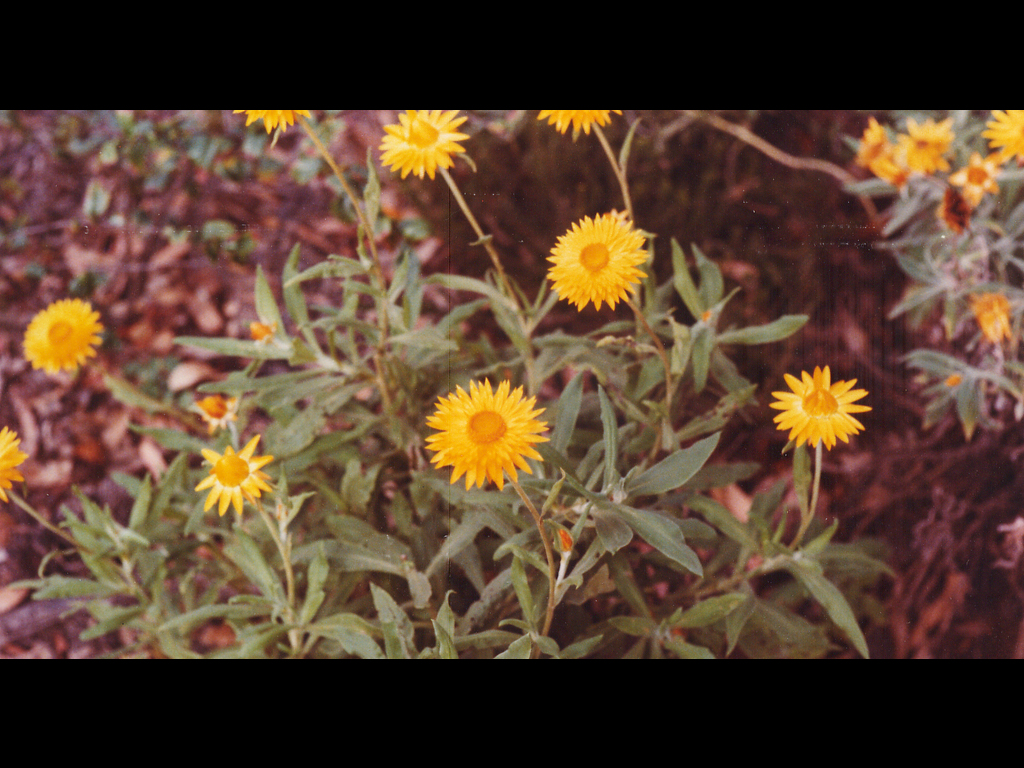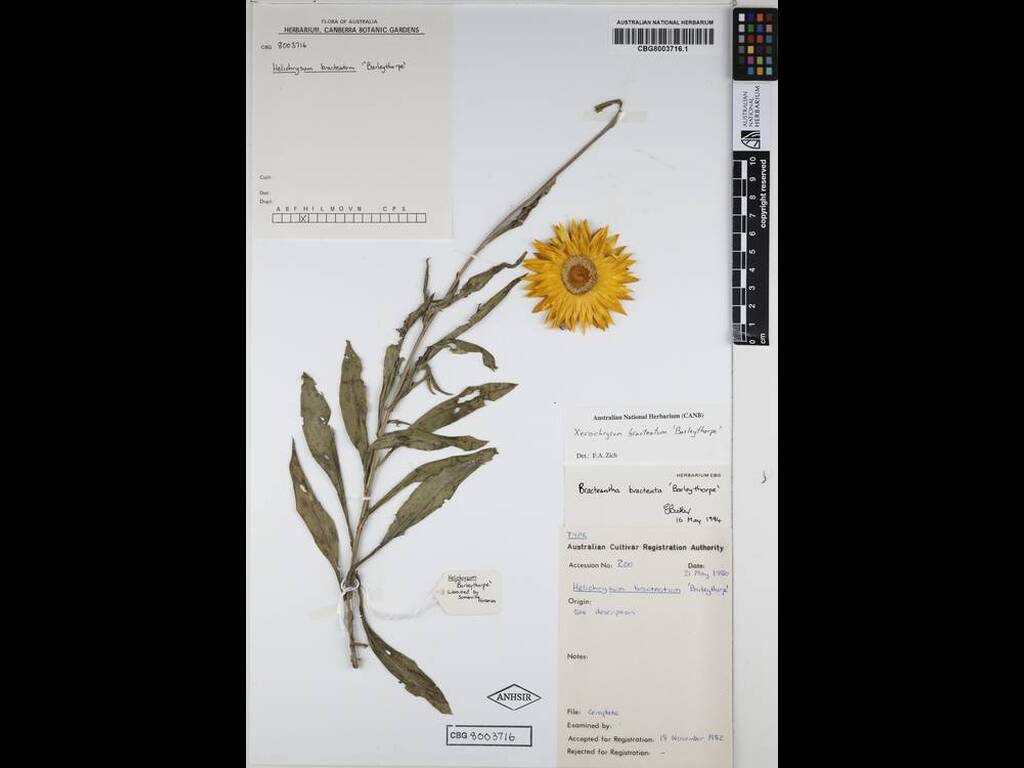Xerochrysum bracteatum 'Barleythorpe'
- File Number
- 200
- ACRA Field Book Number
- 200
- Registration Date
- 17/11/1982
- Application Received
- 21/05/1980
- Family
- Asteraceae
- Cultivar Name
- Xerochrysum bracteatum 'Barleythorpe'
- Origin
- Xerochrysum 'Barleythorpe' is a seedling of X. 'Dargan Hill Monarch' and was selected by Somerville Nurseries, Somerville, Victoria. The cultivar was first received by the Authority on 21 May 1980. The applicant is Mr Tom Fawcett of Somerville Nurseries, Flinders Road, Somerville, Victoria 3912. Once known as Bracteantha 'Barleythorpe' formerly Helichrysum 'Barleythorpe'
- Characteristics
- This cultivar grows into a dense shrub plus/minus 60cm tall by up to 1m wide. The leaves are similar in size and shape to X. 'Dargan Hill Monarch' but lack the dense tomentum of that cultivar. The inflorescence is much the same size as X. 'Dargan Hill Monarch', being some 7-9cm in diameter. X. 'Barleythorpe' has inner involucral bracts that are narrower and more numerous than in B. 'Dargan Hill Monarch'. The inflorescence is golden yellow in colour and the flowering season extends from spring to autumn. Diagnosis: Xerochrysum 'Barleythorpe' can be distinguished from B. 'Dargan Hill Monarch' by the more numerous and narrower inner involucral bracts and the less tomentose leaves. Comparators: Xerochrysum 'Dargan Hill Monarch' CBG 8006644.
- Cultivation
- This cultivar is said to be frost hardy and relatively hardy to drought. The colour of the flowers is as for X. 'Dargan Hill Monarch'. This cultivar does not appear to show any merit above X. 'Dargan Hill Monarch'. NB. Unless deliberate breeding research is being undertaken, this cultivar should not be grown from seed. Vegetative propagation is the only method of retaining the cultivar form. If raised from seed, immense variation may occur in the seedlings.
- Publication
- Payne, W.H. (1989), Garden Cultivars of Australian Plants. Australian Plants 15(124): 341
- Colour Coding
- RHS Colour Chart 1966.ray florets: yellow orange 14A.disc florets: yellow orange 23A.foliage: near green 136C
- Propagation
- Cuttings
- Applicant Name
- Tom Fawcett
- Uses
- As part of a mass planting or mixed in a shrubbery, or as a feature plant.
- Availability
- Unknown
- ANBG Accession Numbers
- ACC200; CBG8003716.
- NSL ID
- -

